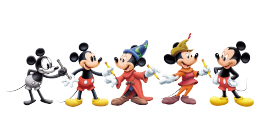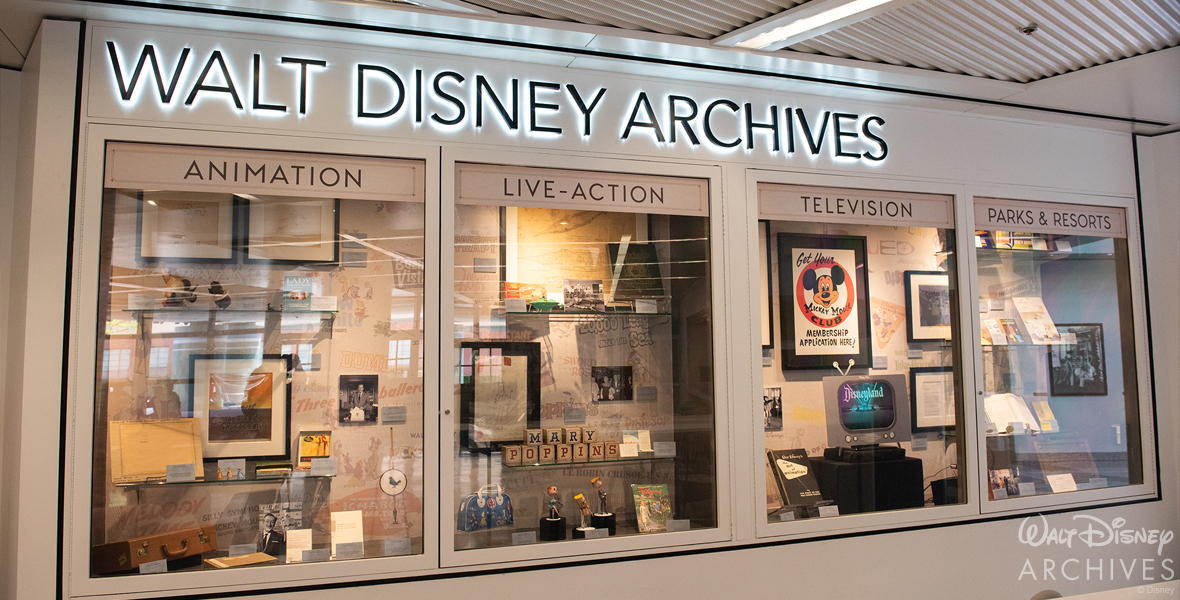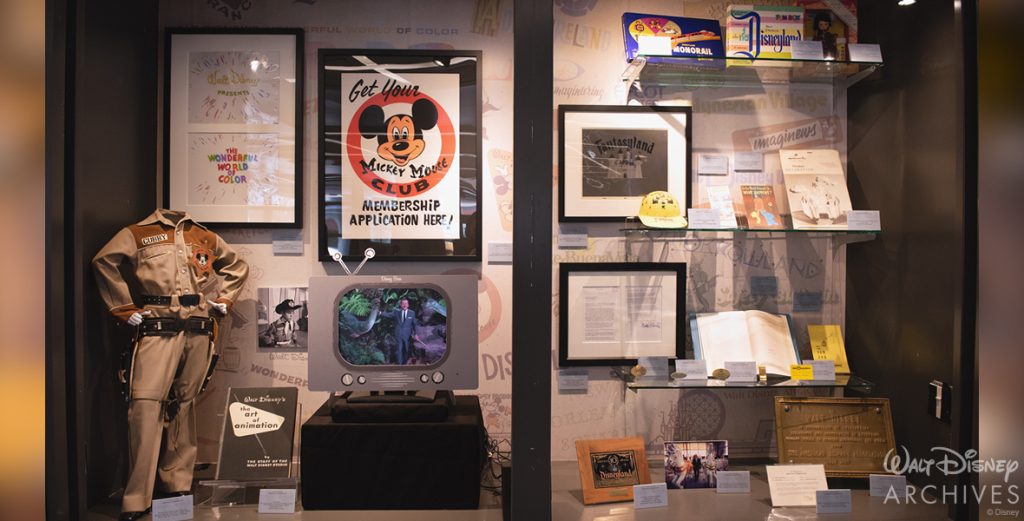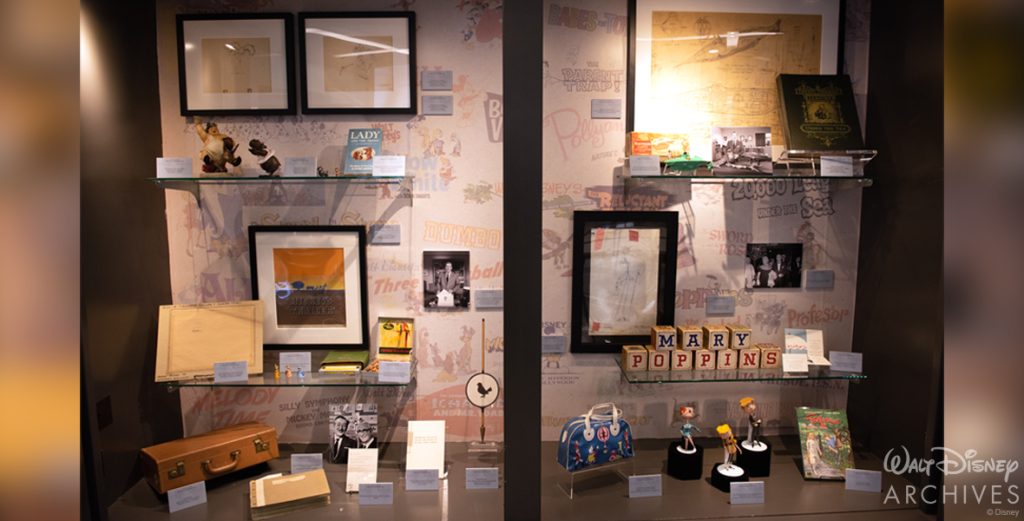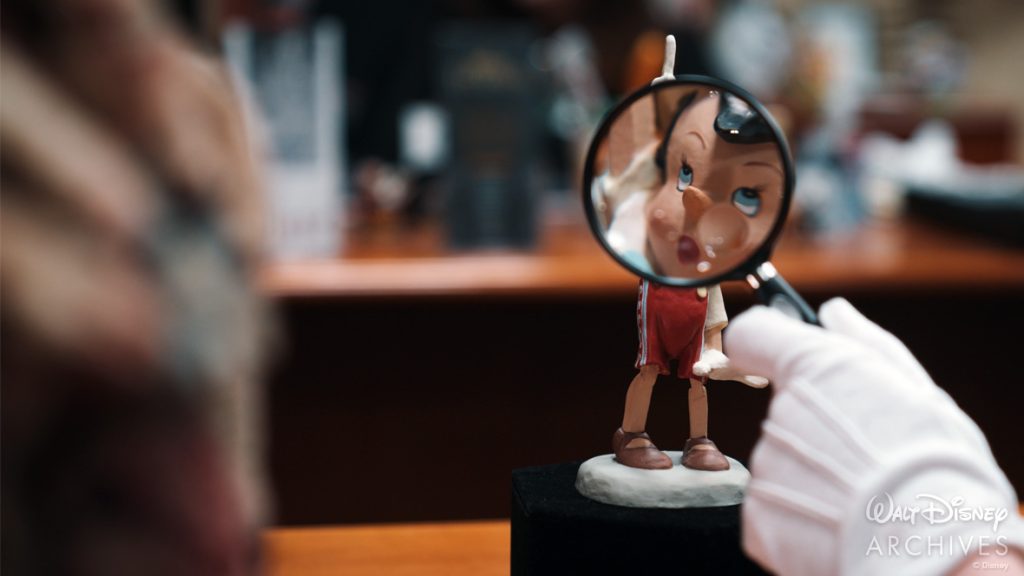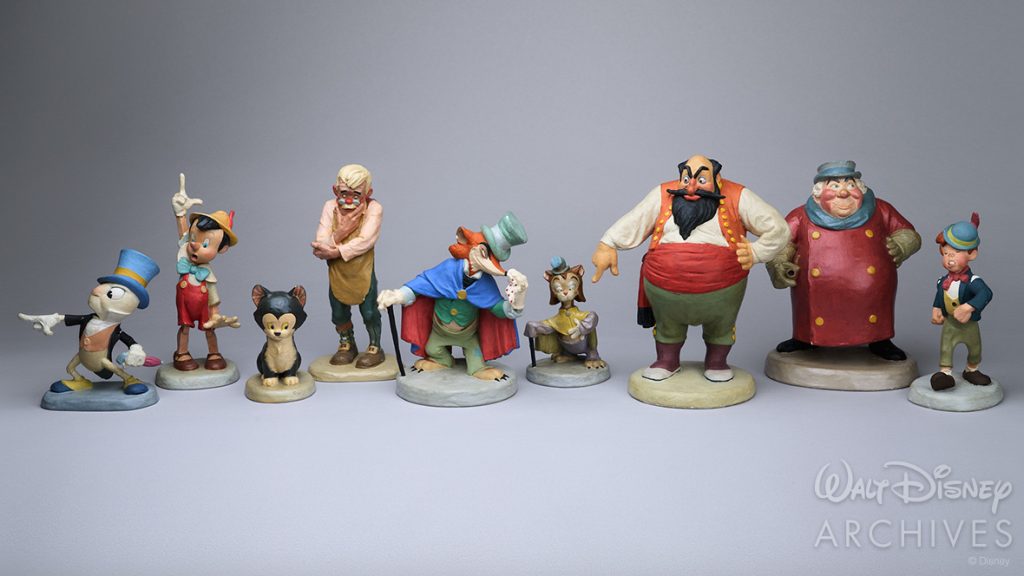By Francesca Scrimgeour and Julia Vargas, Walt Disney Archives
When Walt Disney first arrived in California during the summer of 1923, he moved in with his uncle, Robert Disney, at 4406 Kingswell Avenue in Los Angeles. Before he made the move out west, he had sent a pilot film, Alice’s Wonderland—which he had made back in Kansas City—to various distributors hoping to sell the novel film concept as a dedicated series.
In October, Margaret Winkler, an accomplished New York distributor, thrilled with the Alice Comedies concept, agreed to back the proposed series. The contract for the first year of production called for one short film a month—a daunting task, but one that Walt, with his brother Roy by his side, was willing to try and accomplish. Thus, on October 16, 1923, Walt and Roy’s first contract was signed, and the brothers were in business. They named their company the Disney Brothers Cartoon Studio—a testament to the communal faith in their creative endeavor that would drive their business for the ensuing decades, changing the face of entertainment forever. From these humble Hollywood beginnings, Walt and Roy’s organization would grow to reflect not only the ethos of the brothers’ creative and business acumen, but an intensely collaborative spirit.
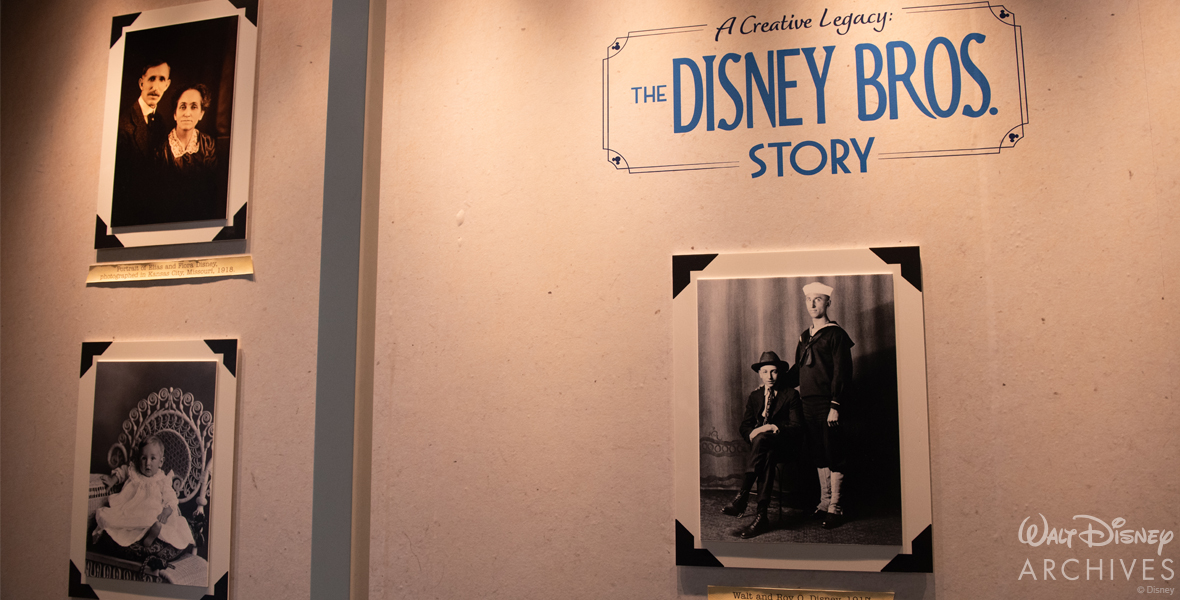
To celebrate this extraordinary partnership and foundation of the company’s 100-year history, the Walt Disney Archives recently unveiled a brand-new display entitled A Creative Legacy: The Disney Bros. Story. Located in the lobby of the Frank G. Wells Building on The Walt Disney Studios lot, this celebratory exhibit showcases the artistry, excellence, ingenuity, and perseverance that have defined the Disney brothers’ story. The display is open to Disney employees and their guests visiting The Walt Disney Studios and D23 Gold and Gold Family Members participating in The Official Walt Disney Studios Tour – Presented by D23, as well as to guests partaking in select Southern California itineraries with Adventures by Disney.
The first of two exhibit cases reflect the Disney brothers’ story through featured historical photographs from their childhood up through the earliest days at the studio. The central showcase, presented just outside the Walt Disney Archives offices, highlights four different disciplines that represent many landmark business endeavors of The Walt Disney Company: Animation, Live-Action, Television, and Parks & Resorts.
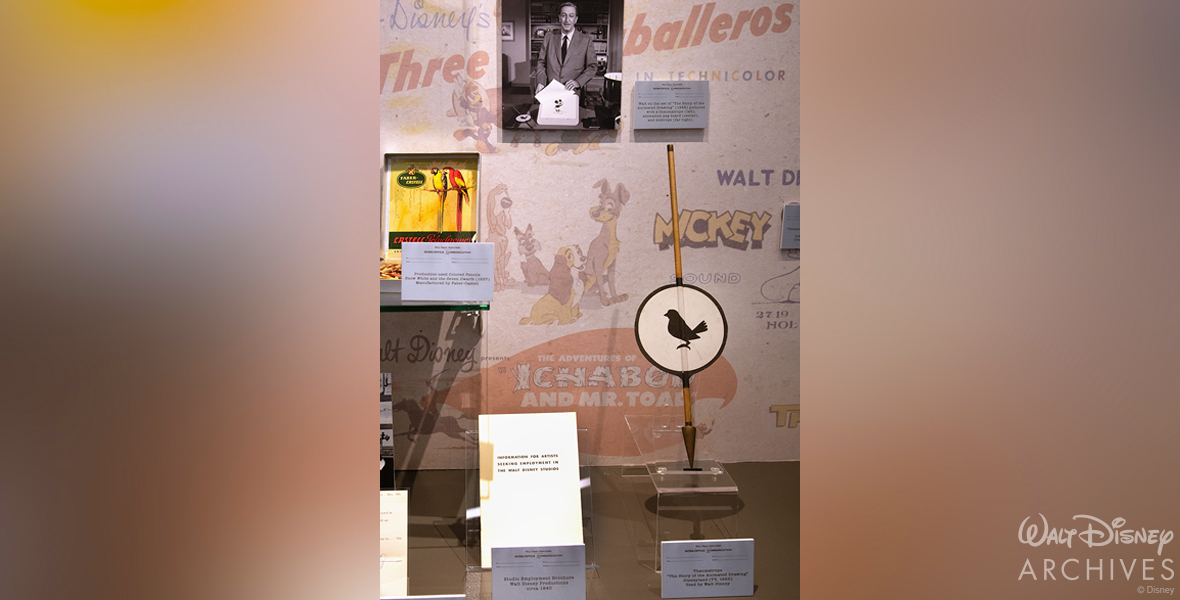
Animation
Animation serves as the creative foundation of The Walt Disney Company and, appropriately, begins the story of this display. One of the items featured is the thaumatrope used by Walt Disney in “The Story of the Animated Drawing,” an episode of the Disneyland television series that aired on November 30, 1955. In his lead-in introducing the show, Walt demonstrates how to use the optical toy, explaining how it exhibits the principles of the “persistence of vision.” One side of the disc features the image of a bird, while the other shows a bird cage. When the disc is twirled, it creates the illusion of a combined impression of the bird inside the cage. Popular in the 19th century, the thaumatrope is recognized as an important antecedent of cinematography and the art of animation. Walt also discusses other animation novelties in this episode, such as the zoetrope and praxinoscope, examples of which are preserved in the Walt Disney Archives.
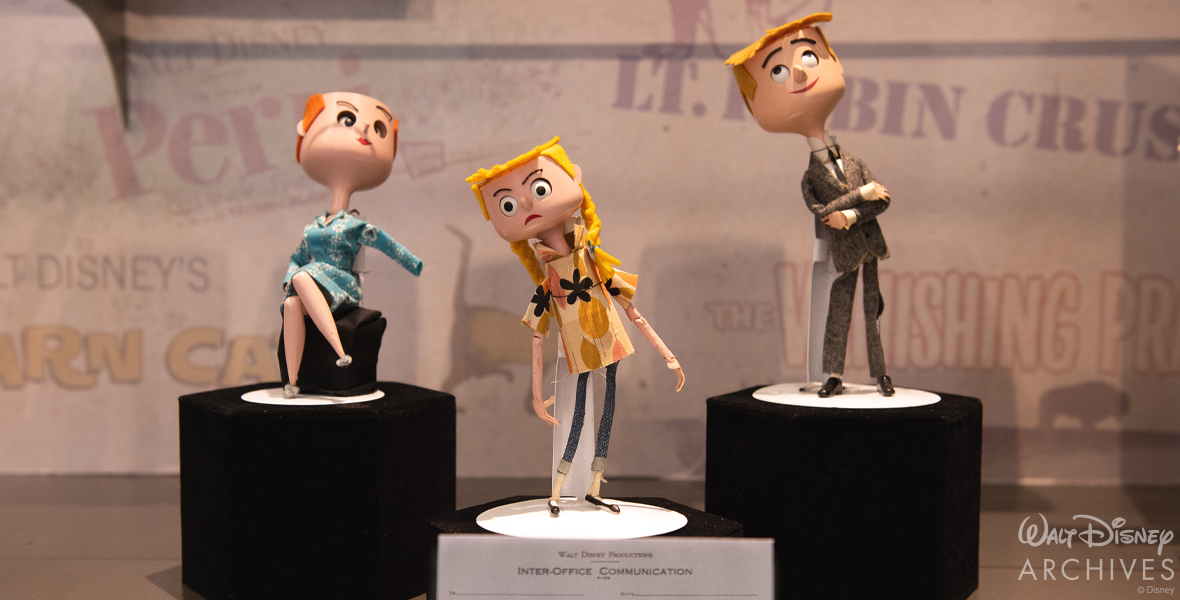
Live-Action
Well-established in the field of animation, the Disneys forayed into the live-action side of filmmaking, releasing their first fully live-action feature in 1950 with Treasure Island. This section of the display showcases items from the Walt Disney Archives that represent the studio’s range of iconic live-action films through the years, including prop books, merchandise, and concept art.
A number of classic Disney films begin with an opening sequence that helps to establish the premise of the ensuing story. For The Parent Trap (1961), starring Disney Legend Hayley Mills, the imaginative title sequence was produced in stop-motion animation by renowned artists T. Hee, Disney Legend Bill Justice, and Disney Legend X Atencio. The sequence was also set to the tune of the title song, “The Parent Trap,” by songwriters (and Disney Legends) Richard M. and Robert B. Sherman. This charming family of puppets was created using moveable arms and legs, felt hair, and snazzy outfits. Having these assets in the Walt Disney Archives allows the staff to preserve them as historical objects, which includes conservation work that protects their condition, so that they may continue to be shared with fans.

Television
It is no secret that Walt was a leader in television entertainment, and the shows he developed were testament to his storytelling prowess, imagination, and innovative spirit. Making his TV debut on One Hour in Wonderland in 1950, Walt quickly recognized the power of this new medium and used it to his advantage a few years later when building Disneyland.
The Disneys’ TV legacy is represented in the display through the title cels for the Walt Disney’s Wonderful World of Color series; the membership application sign for the Mickey Mouse Club; and the Talent Roundup Day costume worn by Mouseketeer Carl “Cubby” O’Brien on the popular children’s show. With TV being such a groundbreaking enterprise for Walt Disney Productions—bringing Walt himself into the homes of American families on a weekly basis—it was only natural to include a montage of several of his TV lead-ins. In one of the featured clips, Walt showcases the prop book titled Walt Disney’s The Art of Animation, which was used in “The Story of the Animated Drawing” (1955) and “The Plausible Impossible” (1956) episodes of the Disneyland anthology series. In “The Story of the Animated Drawing,” Walt introduces this book as a pet project intended to document the history of the animator’s craft. Walt goes on to explain the book as a resource where “...you can read about the artists who dreamed and experimented, had their failures and successes, but somehow never gave up trying to breathe life and movement into the intimate picture.” While the prop presented on television was merely a mockup, a published book of the same title, by biographer and legendary entertainment reporter Bob Thomas, would be released in 1958.

Parks & Resorts
Partially as a result of the Disney brothers’ foray into television entertainment, Walt and Roy would revolutionize the amusement park industry. Famously, the idea of Disneyland was sparked in Walt’s imagination when he would take his two young daughters to carnivals, zoos, and small amusement parks, but often found himself sitting on benches eating peanuts while they experienced rides and had all the fun. Walt’s dream of a place where parents and children could have fun together evolved into the first Disney park, Disneyland.
The “Parks & Resorts” section of the exhibit is especially fitting in this space since Walt first thought of building his park on a strip of land just across Riverside Drive from the Disney Studios in Burbank. However, that acreage proved too small to hold all his ideas, thus leading him to Anaheim for his new venture.
This section of the display features early Disneyland merchandise, opening year brochures, and early Cast Member name tags, along with interoffice memos and commemorative plaques. An especially remarkable artifact is the unassuming blue binder housing an original copy of the Disneyland prospectus, which was prepared by WED Enterprises in 1953. This particular document was used by Roy, widely considered the financial genius of the Company, to present to potential investors and helped Walt achieve his dream of Disneyland.
A Creative Legacy: The Disney Bros. Story is open to Disney employees and their guests visiting The Walt Disney Studios in Burbank. D23 Gold and Gold Family Members can visit through The Official Walt Disney Studios Tour—Presented by D23, and guests traveling with Adventures by Disney can visit via the Disneyland Resort and Southern California trip and Disneyland Resort and Southern California Escape.


